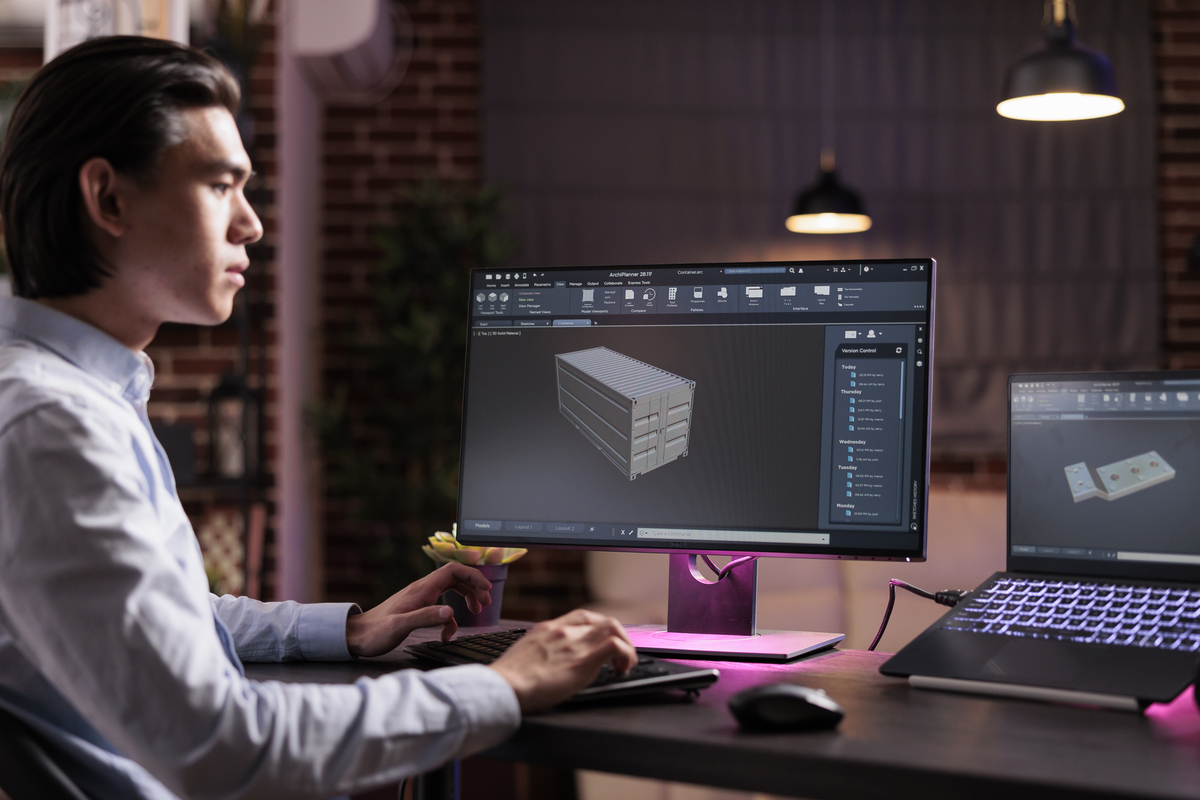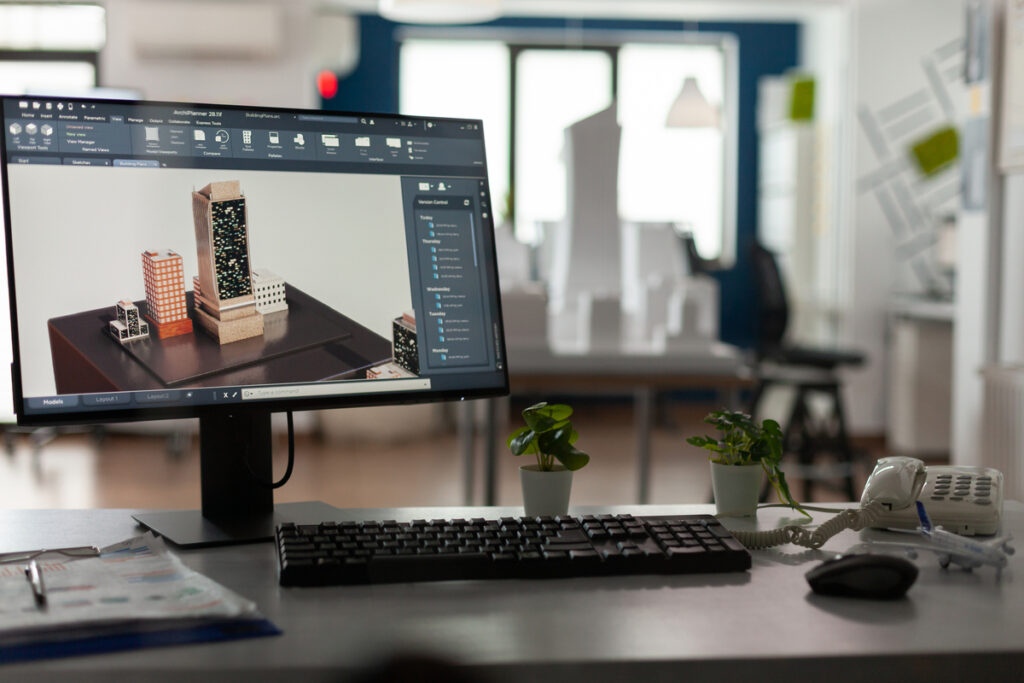In today’s rapidly evolving construction landscape, the integration of innovative technologies has revolutionized traditional practices, significantly reshaping project methodologies and outcomes. One such transformative tool at the forefront of this paradigm shift is clash detection in BIM (Building Information Modeling). Clash detection, a process aimed at identifying and mitigating conflicts among diverse building elements, stands as a linchpin in modern construction practices, fundamentally altering the industry’s approach to project management.
According to industry reports, clashes or conflicts among architectural, structural, electrical, and mechanical systems account for a substantial portion of construction errors and subsequent rework. Studies indicate that nearly 35% to 40% of construction rework is attributed to clashes and coordination issues, significantly impacting project timelines and budgets. These clashes, if left unaddressed, lead to on-site modifications, costly delays, and compromised structural integrity, escalating overall project expenses by up to 10% to 15% on average.
In response to these challenges, clash detection in BIM emerges as a proactive solution, playing a pivotal role in error prevention, risk mitigation, and cost-saving measures within construction projects. By leveraging sophisticated BIM environments, clash detection tools enable stakeholders to identify clashes early in the design phase, substantially reducing rework, streamlining project planning, and optimizing resource allocation.
As clash detection in BIM continues to evolve and innovate in 2024, with advancements including AI integration, real-time collaboration tools, and enhanced visualization techniques, its significance in the construction industry becomes increasingly pronounced. This comprehensive analysis delves into the core principles, benefits, challenges, and cutting-edge advancements in clash detection, illuminating its pivotal role in shaping the future of construction practices.
Table of Contents
Importance of Clash Detection in BIM
Clash detection in BIM holds immense importance in the construction industry due to several critical reasons:
Error Prevention and Risk Mitigation
Clash detection in BIM is pivotal for uncovering conflicts among structural, architectural, electrical, and mechanical elements pre-construction. Early identification curtails construction errors, minimizes rework and slashes expenses linked to on-site modifications. This process preemptively mitigates risks throughout the construction phase, enhancing project efficiency and ensuring smoother execution. Detecting clashes ahead of time equips teams to address issues proactively, fostering a streamlined workflow and enhancing overall project success while averting potential setbacks.
Time and Cost Savings
Efficiency in planning is pivotal. Resolving design clashes preemptively aids in seamless project organization, sidestepping delays due to unforeseen conflicts. This proactive approach minimizes rework, slashing on-site alterations. Consequently, this curtails labor expenses and material wastage, optimizing resources and bolstering cost-efficiency throughout the construction phase.
Enhanced Collaboration and Communication
Cross-disciplinary coordination through clash detection in BIM catalyzes harmonious collaboration among stakeholders—architects, engineers, and contractors—by streamlining early communication and coordination. This process guarantees a seamless, viable design. Moreover, it significantly enhances decision-making by offering a visual representation of clashes, empowering teams to strategize and implement effective solutions promptly. This proactive approach not only minimizes errors but also fosters a more efficient and informed project progression, ultimately ensuring the delivery of high-quality, successful outcomes within the construction industry.
Quality and Safety Assurance
Enhanced building performance stems from a seamless integration of systems and components, guaranteeing structural quality and functionality. Addressing clashes ensures a cohesive fit, bolstering overall efficiency. Additionally, recognizing conflicts related to safety-critical elements upholds compliance with rigorous standards, mitigating potential risks for both occupants and construction personnel. This proactive approach not only ensures adherence to safety protocols but also prioritizes the well-being of all involved, fostering a secure and reliable environment within the structure.
Suggested article to read: World’s 10 Best BIM Projects; 2024 Review
Adoption of Building Information Modeling (BIM)
Clash detection in BIM, a pivotal facet of BIM, spearheads technology-driven progress in construction. Within BIM platforms, it enables streamlined data amalgamation, crucial for efficient clash identification and resolution. Integrating diverse data sources into a unified model amplifies accessibility, enhancing the construction industry’s workflow and accuracy. This integral function not only identifies clashes but also optimizes data management, catalyzing a paradigm shift towards streamlined, effective construction practices.
Client Satisfaction and Project Success
Effective clash detection in BIM is pivotal for meeting client expectations, and ensuring projects stay within budget, schedule, and quality benchmarks. This process not only satisfies clients but also enhances overall project performance. By meticulously identifying clashes early on, BIM facilitates smoother construction processes, minimizing disruptions and enhancing project efficiency. This, in turn, significantly increases the likelihood of achieving successful project outcomes, establishing a solid foundation for meeting and even surpassing client needs and aspirations.
In essence, clash detection in BIM is a proactive measure to address potential conflicts in construction projects, promoting efficiency, collaboration, cost-effectiveness, and overall project success. Its integration within BIM workflows has become a cornerstone for modern construction practices, fostering a more streamlined and optimized construction process.

Basics of BIM Clash Detection
Clash detection in BIM within Building Information Modeling (BIM) involves a systematic process of identifying and resolving conflicts or clashes among various building elements in a virtual 3D model. Here are the basics of how BIM clash detection works:
1. Building Information Modeling (BIM) Environment
- BIM involves creating a comprehensive digital representation of a building or infrastructure project.
- It integrates various data sources and disciplines (architecture, engineering, construction, etc.) into a cohesive 3D model.
Building Information Modeling (BIM) revolutionizes project development by synthesizing diverse data into an immersive digital blueprint. It goes beyond mere representation, fostering collaboration among architecture, engineering, and construction sectors. By melding multidisciplinary insights into a unified 3D model, BIM streamlines design precision, cost efficiency, and project management.
Its comprehensive approach encompasses the lifecycle of structures, facilitating seamless coordination and communication among stakeholders. BIM’s integration of data sources optimizes decision-making, ensuring sustainability and enhancing construction quality. It empowers innovation, fostering a transformative landscape in the construction industry through its holistic and dynamic digital representation.
Suggested article to read: 13 Most Impressive BIM Projects In World: 2024 Review
2. Modeling Building Elements
- Different project stakeholders create and input their respective building elements into the BIM model. These elements include architectural, structural, MEP (mechanical, electrical, plumbing), and other systems.
In a Building Information Modeling (BIM) framework, diverse stakeholders contribute unique components to the model. Architects infuse design intricacies, structural engineers embed stability, while MEP specialists integrate mechanical, electrical, and plumbing systems. This collaborative input forms a comprehensive digital blueprint, encompassing various building elements.
The BIM model becomes a harmonized repository, housing architectural aesthetics, structural robustness, and intricate systems, fostering a cohesive representation of the project. Through this collaborative effort, stakeholders interlace their expertise, weaving a multidimensional tapestry within the BIM model, and orchestrating a holistic and integrated portrayal of the construction endeavor.
Suggested article to read: What Is Open BIM? Comprehensive Guide 2024
3. Clash Detection Setup
- Clash detection in BIM requires compatible BIM software that can analyze the 3D model for clashes.
- Parameters and rules for clash detection in BIM are set within the software, specifying how different elements should interact or avoid conflicts.
Clash detection in BIM relies on compatible software capable of scrutinizing 3D models for conflicts. Within the software, predefined parameters and regulations dictate clash detection in BIM, guiding how various elements interact or circumvent conflicts.
These rules establish the criteria for identifying clashes and determining spatial discrepancies or clashes among architectural, structural, and mechanical components. The BIM software serves as the hub for detecting clashes, ensuring seamless coordination, and mitigating potential conflicts, thereby enhancing the efficiency and accuracy of construction projects.
Suggested article to read: What is Scan to BIM? Comprehensive Guide 2024
4. Running Clash Detection
- Once the 3D model is complete or at various design milestones, clash detection in BIM is initiated using the BIM software.
- The software analyzes the model, comparing the spatial relationships and interactions among various building elements based on the predefined rules and parameters.
At pivotal stages like completion or specific design milestones, the BIM software activates clash detection in BIM, scrutinizing the 3D model. This process meticulously assesses spatial connections and interactions among diverse building elements. Using predefined parameters and rules, the software scrutinizes the model’s components, ensuring coherence and flagging any potential clashes. Through this iterative process, it pinpoints conflicts, allowing timely adjustments and ensuring seamless integration of building elements, streamlining the construction workflow.
Suggested article to read: How much does Scan to BIM Cost? Guide to 2024
5. Clash Identification
- The software identifies clashes where different elements intersect or conflict with each other.
- Clash reports are generated, highlighting the specific clashes, their locations, and the elements involved.
The software efficiently detects conflicts arising from intersecting elements. It produces comprehensive clash reports, meticulously outlining the exact clashes, their precise locations, and the elements implicated. These reports serve as invaluable resources, offering detailed insights into the clashes and facilitating swift resolutions. Through its advanced capabilities, the software streamlines the identification and analysis of conflicts, ensuring precise documentation of clashes and their associated components for seamless problem-solving and enhanced project management.
6. Visualization and Reporting
- Visual representations, such as 3D visualizations or color-coded graphics, are often used to display clashes within the model for better understanding.
- Detailed reports are generated, providing information on the clashes found their severity, and potential impacts on the construction process.
Visual representations, like intricate 3D renderings and vibrant color-coded graphics, serve as pivotal tools to elucidate clashes within models, enhancing comprehension. These dynamic visuals are complemented by comprehensive reports, meticulously outlining identified clashes, their gravity, and potential ramifications in the construction phase.
These reports furnish detailed insights into the conflicts, facilitating informed decision-making and strategizing to mitigate risks before they impact the construction process. By amalgamating visual aids and comprehensive documentation, project stakeholders gain a holistic view, fostering proactive measures and ensuring smoother project execution.
7. Clash Resolution
- Project teams review clash reports to understand the conflicts and their implications.
- Collaborative efforts among stakeholders aim to resolve clashes by making adjustments to the design, system layouts, or configurations within the BIM model.
Project teams diligently analyze clash reports to comprehend conflicts and their ramifications. Stakeholders engage in collaborative endeavors to address clashes, seeking resolutions through design modifications, system layout adjustments, or configurations within the BIM model. This concerted effort ensures a comprehensive approach to resolving conflicts, fostering smoother project progression, and enhancing overall efficiency.
8. Iterative Process
- Clash detection in BIM is an iterative process, often repeated at various stages of the project’s lifecycle.
- As the design evolves or new elements are added, clash detection in BIM is performed again to ensure ongoing coordination and conflict resolution.
In construction projects utilizing BIM, clash reports are pivotal for dissecting conflicts. Clash detection in BIM is a cyclical process, integral across the project’s lifespan. Teams scrutinize these reports to unravel conflicts and their origins.
As the design progresses or fresh elements integrate, BIM’s clash detection in BIM undergoes multiple iterations. Repeated checks occur at diverse project phases, ensuring continuous coordination and conflict resolution. This iterative approach safeguards seamless integration, addressing clashes promptly, and streamlining the collaborative process within the evolving project landscape.
9. Documentation and Tracking
- All clashes identified, and their resolutions are documented for future reference.
- Tracking the resolution process helps maintain a clear record of changes made to the model.
Identifying all conflicts and documenting their resolutions ensures a comprehensive reference for future instances. This systematic tracking of conflict resolutions serves as an invaluable record, enabling a transparent overview of alterations implemented within the model.
Such documentation not only catalogs clashes but also delineates the precise steps taken to resolve them, fostering a clearer understanding of the model’s evolution. Maintaining this meticulous record enhances transparency and facilitates informed decision-making in future iterations, contributing to the model’s continuous improvement and reliability.
10. Validation and Verification
- Once clashes are resolved within the BIM model, the updated model is revalidated through clash detection in BIM to ensure that conflicts have been successfully mitigated.
After addressing clashes within the BIM model, the revised version undergoes thorough revalidation using clash detection in BIM techniques within BIM software. This critical step guarantees the successful resolution of conflicts and validates the effectiveness of the mitigation process.
By conducting comprehensive clash detection in BIM, the updated model ensures the seamless integration of various components, preventing potential issues in construction or design implementation. This meticulous verification safeguards against future complications, fostering a smoother workflow and enhancing the overall efficiency and reliability of the building information modeling process.
By utilizing BIM clash detection, project teams can proactively address clashes and coordination issues before they manifest on-site, reducing rework, delays, and cost overruns during the construction phase. It fosters better collaboration among project stakeholders and contributes to the overall efficiency of the construction process.

Clash Detection Process
Clash detection BIM involves several sequential steps to identify, analyze, and resolve conflicts or clashes among various building elements. Here’s an overview of the clash detection process:
1. Preparation and Setup
- Model Creation: Develop a comprehensive 3D model of the building or infrastructure project using BIM software.
- Element Input: Different disciplines (architecture, structural, MEP, etc.) input their respective building elements into the model.
Creating a 3D model through Building Information Modeling (BIM) software involves an intricate process. Initially, the project’s foundational stages require the development of a comprehensive model of the intended building or infrastructure. This encompasses intricate detailing and accurate representation of various facets, such as architectural designs, structural components, and MEP (Mechanical, Electrical, Plumbing) systems. Each discipline contributes its specific elements, ensuring a holistic portrayal within the model.
Architects provide the blueprint for the aesthetic and spatial aspects, structural engineers add the load-bearing elements, while MEP professionals incorporate intricate systems like HVAC, electrical, and plumbing. The collaborative integration of these diverse inputs ensures a cohesive and synchronized representation within the model. This process streamlines coordination, allowing stakeholders to visualize, analyze, and modify the structure efficiently. The resultant 3D model serves as a comprehensive virtual prototype, aiding in design optimization, clash detection in BIM, and overall project efficiency.
Suggested article to read: What is BIM and Importance of BIM in Construction? Ultimate Guide 2024
2. Establishing Clash Detection Criteria
- Rule Definition: Define clash detection rules and criteria within the BIM software. These rules determine how elements should interact or avoid conflicts.
- Coordinate Systems: Ensure all elements within the model are aligned and using the same coordinate system for accurate clash detection in BIM.
In the realm of Building Information Modeling (BIM) software, clash detection rules and criteria are pivotal. These regulations set the parameters for how elements within a model interact or steer clear of conflicts. They act as a blueprint guiding the software to identify clashes between structural components, systems, or elements that might hinder the construction process.
Moreover, coordinate systems play a foundational role in this process. Alignment and uniformity across all elements within the model using the same coordinate system are imperative. Consistency in coordinates ensures accurate clash detection in BIM by providing a standardized reference point for analysis. It allows the software to precisely pinpoint clashes or discrepancies in the model, aiding in effective troubleshooting and resolution before the construction phase.
Therefore, the integration of meticulous clash detection in BIM rules alongside synchronized coordinate systems enhances the efficiency and reliability of BIM software, streamlining the construction process and mitigating potential errors.
3. Clash Detection in BIM Execution
- Running Clash Detection: Initiate clash detection using the BIM software, analyzing the model against the predefined rules and criteria.
- Analysis Process: The software identifies clashes where elements intersect or conflict with each other based on the established criteria.
The first step in the clash detection process involves initiating it through specialized BIM software. This software utilizes predefined rules and criteria to scrutinize the model for potential clashes. As the analysis commences, the software meticulously examines the elements within the model, identifying instances where they intersect or conflict, aligning with the set criteria. These clashes could involve structural components overlapping, systems conflicting, or spatial discrepancies.
The software’s algorithm is designed to pinpoint these discrepancies accurately, highlighting where adjustments or revisions are necessary. Once clashes are identified, the software generates reports detailing the conflicts, aiding in the resolution process for designers, engineers, and stakeholders. This meticulous analysis ensures the early detection of issues, enhancing the overall efficiency of the construction or design process by preventing errors and conflicts before physical implementation.
4. Clash Identification and Reporting
- Clash Visualization: Visual representations within the software highlight clashes, often using color-coded visuals or 3D overlays to pinpoint conflicting elements.
- Clash Reports: Generate detailed reports listing the clashes found, their locations, severity, and the elements involved. These reports aid in understanding and prioritizing clashes.
RClash offers comprehensive clash detection features, integrating two essential components: Visualization and Reports. Through visual representations, clashes are vividly highlighted using color-coded visuals or 3D overlays, effectively pinpointing conflicting elements within the software interface. This intuitive approach allows users to quickly identify and comprehend clash occurrences.
Moreover, RClash generates detailed reports that catalog the clashes discovered during analysis. These reports furnish in-depth information, including clash locations, severity assessments, and specifics of the elements involved. By presenting this data systematically, users gain a clearer understanding of the clashes’ impact and can prioritize resolutions accordingly. These reports serve as valuable resources, aiding project teams in streamlining their clash resolution strategies and optimizing project workflows for enhanced efficiency and precision.
Suggested article to read: What is 5D BIM? Comprehensive Guide 2024
5. Review and Analysis
- Stakeholder Collaboration: Project teams review clash reports, understanding the nature and impact of identified clashes.
- Prioritization: Evaluate the severity and criticality of clashes to prioritize resolution efforts.
In collaborative stakeholder engagements, project teams meticulously assess clash reports, comprehending the essence and repercussions of the identified conflicts. This involves a thorough analysis of clashes, discerning their nature and the extent of their impact on the project’s dynamics. Following this assessment, the focus shifts to prioritizing these clashes based on their severity and criticality.
By gauging the potential risks and ramifications each conflict poses, the team strategically allocates resources and attention toward resolving the most pressing issues first. Prioritization becomes a pivotal step in streamlining resolution efforts, ensuring that the team efficiently addresses conflicts in an order that minimizes disruption and maximizes overall project efficiency. This deliberate approach not only enhances problem-solving but also optimizes the utilization of resources, fostering a smoother project progression while addressing conflicts in a structured and strategic manner.
6. Clash Resolution Strategies
- Collaborative Resolution: Stakeholders collaborate to find solutions, which may involve redesigning elements, adjusting layouts, or reconfiguring systems within the BIM model.
- Iterative Process: Resolve clashes iteratively, revising the model and re-running clash detection in BIM to validate the effectiveness of solutions.
Collaborative Resolution within Building Information Modeling (BIM) involves stakeholders pooling their expertise to devise solutions. This collaborative effort often entails reshaping elements, modifying layouts, or reorganizing systems within the BIM framework. By leveraging diverse perspectives, stakeholders collectively navigate challenges, fostering a more comprehensive and effective resolution process.
Furthermore, the Iterative Process in BIM clash resolution follows a cyclical approach. After implementing initial solutions, stakeholders revise the model and rerun clash detection protocols to verify the efficacy of the changes made. This iterative cycle allows for continual refinement, ensuring that identified clashes are effectively addressed and resolved. Through multiple iterations and validations, the BIM model evolves toward a more refined and conflict-free state, optimizing the overall construction or design process. This iterative nature not only enhances problem-solving but also cultivates a culture of continuous improvement within BIM workflows.
7. Documentation and Tracking
- Record Keeping: Document all clashes identified, their resolutions, and any modifications made to the model.
- Change Management: Keep track of changes made to the model, maintaining a clear record of clash resolution for future reference.
Record keeping in model management involves documenting identified clashes, their respective resolutions, and any alterations to the model. This comprehensive approach ensures a clear historical record, aiding in future decision-making and understanding the evolution of the model. Capturing clashes and their resolutions enhances transparency, facilitating a deeper comprehension of the model’s development.
Change management further strengthens this process by meticulously tracking all modifications implemented in the model. It involves maintaining a precise log of clash resolutions, serving as a valuable reference point for addressing similar issues in the future. This systematic documentation is crucial for maintaining the model’s integrity, allowing for effective communication among team members and ensuring accountability in the modification process. Overall, a robust record-keeping and change management strategy not only fosters transparency but also streamlines the model’s evolution while enabling informed decision-making.
8. Validation and Verification
- Model Revalidation: Once clashes are addressed within the BIM model, revalidate the updated model through clash detection in BIM to ensure conflicts have been successfully mitigated.
Model revalidation involves the critical step of verifying the resolution of clashes within the BIM (Building Information Modeling) model. After identifying conflicts, addressing clashes becomes imperative. This stage involves revisiting the updated model to ensure that the conflicts have been effectively mitigated.
The revalidation process employs clash detection tools within the BIM software, thoroughly analyzing the model to identify any persisting clashes or newly arising conflicts. This meticulous examination guarantees that the modifications made to the model have successfully rectified the initial issues.
By conducting this revalidation, construction professionals ensure the accuracy and integrity of the BIM model, minimizing potential errors during the construction phase. It serves as a crucial quality control measure, validating that the changes implemented have resolved clashes and improved the overall functionality and coherence of the model, contributing to the efficiency and reliability of the construction process.
9. Continuous Iteration
- Lifecycle Integration: Repeat the clash detection process at various project milestones or as the design evolves, ensuring ongoing coordination and conflict resolution.
Lifecycle Integration involves the continual execution of clash detection throughout project phases, guaranteeing seamless coordination and conflict resolution. This iterative process spans various project milestones and adapts as the design evolves. By implementing clash detection at critical intervals, teams can identify, assess, and resolve clashes or discrepancies in building elements or systems. It ensures that the project maintains alignment with design goals, mitigates potential conflicts early, and facilitates smoother progress.
The cyclical nature of this approach enables proactive problem-solving, reducing rework, cost overruns, and delays. As the project progresses, ongoing coordination through lifecycle integration optimizes efficiency, fosters collaboration among stakeholders, and enhances the overall quality of the final deliverables. Thus, integrating clash detection within the project’s lifecycle becomes integral for achieving a harmonious and well-coordinated result.
10. Implementation on Site
- Construction Planning: Translate resolved clashes and design modifications from the BIM model to the construction site to avoid conflicts during the actual building phase.
Construction planning involves the critical task of translating resolved clashes and design modifications identified in Building Information Modeling (BIM) to the physical construction site. This translation process aims to preempt conflicts during the actual building phase. BIM technology allows for meticulous clash detection in BIM and modification resolution in a digital space, ensuring that potential issues, like structural conflicts or spatial discrepancies, are addressed before construction commences.
The next crucial step is effectively transferring these modifications, ensuring seamless communication between the digital model and the real-world site. This involves accurate documentation, detailed plans, and precise instructions for construction teams to follow. By implementing these translated modifications on-site, construction teams can significantly mitigate conflicts, streamline the building process, reduce rework, and ultimately enhance efficiency and precision in constructing structures. Successful integration of BIM data into the construction phase is pivotal for a smoother and more cost-effective building experience.
By systematically executing clash detection in BIM and resolution processes within the BIM environment, project teams can proactively manage clashes, optimize coordination among disciplines, and minimize potential disruptions and costly rework during construction.

Challenges and Solutions
In the realm of clash detection in BIM, several challenges may arise during the process. Addressing these challenges effectively is crucial for successful clash resolution. Here are some common challenges and potential solutions:
Complexity of Models
- Challenge: Models can become increasingly complex with numerous elements and intricate designs, making it difficult to identify clashes accurately.
- Solution: Employ efficient filtering and grouping techniques to focus on specific disciplines or systems during clash detection in BIM, simplifying the analysis process.
Clash Overload
- Challenge: Large numbers of clashes can overwhelm teams, causing difficulties in prioritizing and resolving conflicts effectively.
- Solution: Implement clash grouping and categorization to prioritize clashes based on severity or impact on construction, enabling teams to address critical clashes first.
Interdisciplinary Coordination
- Challenge: Collaboration among different disciplines (architectural, structural, MEP) can be challenging, leading to miscommunications and conflicting priorities.
- Solution: Foster proactive communication and collaboration among stakeholders, establishing clear protocols and regular meetings to address clashes and coordinate solutions collectively.
Software Limitations
- Challenge: Software limitations or compatibility issues may hinder the effectiveness of clash detection tools, impacting the accuracy of clash identification.
- Solution: Invest in up-to-date software solutions that offer advanced clash detection in BIM capabilities, and ensure compatibility between different software used by various stakeholders.
Resolution Delays
- Challenge: Resolving clashes can sometimes lead to delays in the design process, affecting project timelines.
- Solution: Implement agile and iterative approaches, addressing critical clashes swiftly while allowing for continuous improvement and resolution of less critical issues in subsequent iterations.
Model Inaccuracies
- Challenge: Inaccurate or incomplete input data in the BIM model may lead to false positives or missed clashes.
- Solution: Conduct regular model validation and quality checks to ensure the accuracy and completeness of input data, minimizing errors in clash detection in BIM.
Change Management
- Challenge: Managing changes made during clash resolution might pose difficulties in tracking and documenting modifications effectively.
- Solution: Implement robust change management protocols, maintaining clear records of all changes made to the model, including timestamps, reasons for modifications, and stakeholders involved.
Resource and Expertise Constraints
- Challenge: Limited resources or expertise in clash detection tools and methodologies can impede efficient clash resolution.
- Solution: Provide training and support to the project team to enhance their proficiency in clash detection tools and methodologies, or consider outsourcing specialized clash detection services if necessary.
Integration with Construction Process
- Challenge: Bridging the gap between clash resolution in the BIM model and actual implementation on-site can pose challenges.
- Solution: Ensure effective communication between design and construction teams, translating resolved clashes into actionable plans for the construction phase through detailed documentation and clear communication channels.
Effectively addressing these challenges involves a combination of technological improvements, enhanced collaboration and communication, robust processes, and continuous improvement strategies to streamline the clash detection in BIM and the resolution process within BIM environments.

Advancements in Clash Detection Technology (2024)
In 2024, the field of clash detection technology continued to advance, leveraging innovations to enhance accuracy, efficiency, and usability within Building Information Modeling (BIM) environments. Several notable advancements emerged:
AI and Machine Learning Integration
- Automated Clash Identification: AI-driven algorithms were increasingly integrated into clash detection in BIM software, enabling automated detection of clashes by learning from historical data and project-specific patterns.
- Predictive Analytics: Machine learning algorithms predicted potential clashes based on historical data, aiding proactive clash prevention during the design phase.
Real-time Clash Resolution
- Live Collaboration Tools: Tools facilitating real-time collaboration and resolution of clashes among dispersed teams gained popularity, enabling simultaneous editing and resolution within the BIM environment.
- Integrated Communication Platforms: Clash detection in BIM software integrated with communication platforms allowed instant messaging and virtual meetings for swift conflict resolution.
Enhanced Visualization and Analysis
- Augmented Reality (AR) and Virtual Reality (VR): Integration of AR/VR technologies offered immersive clash visualization, allowing stakeholders to explore clashes in a more interactive and realistic environment for better understanding and decision-making.
- Advanced 4D and 5D Visualization: Clash detection in BIM expanded beyond 3D models, incorporating time (4D) and cost (5D) aspects, providing a comprehensive view of clashes’ impacts on project scheduling and budgeting.
Cloud-based Solutions and Collaboration
- Cloud Integration: Clash detection in BIM tools increasingly moved towards cloud-based solutions, facilitating easier access, data sharing, and collaboration among project stakeholders, regardless of their geographic locations.
- Mobile Accessibility: Mobile-compatible clash detection in BIM applications emerged, enabling on-the-go access to clash reports and models, enhancing field coordination, and decision-making.
Automated Clash Resolution Suggestions
- Smart Recommendations: Software offered intelligent suggestions for clash resolution based on predefined rules, past resolutions, and optimal design practices, streamlining the decision-making process for stakeholders.
Interoperability and Open Standards
- Improved Data Exchange: Emphasis was placed on interoperability among different BIM software, encouraging open standards and seamless data exchange between various platforms, reducing compatibility issues, and enhancing collaboration.
Quantitative Clash Analysis
- Quantification of Clash Impact: Clash detection in BIM tools evolved to provide quantitative analysis, offering insights into the potential cost, time, and resource implications of unresolved clashes, aiding in better decision-making.
Risk and Impact Assessment
- Risk-based Clash Prioritization: Clash detection in BIM software integrated risk assessment algorithms, prioritizing clashes based on their potential impact on project timelines, costs, and safety, allowing teams to focus on critical conflicts first.
Integration with Construction Management Systems
- Seamless Integration: Clash detection in BIM software is increasingly integrated with construction management systems, ensuring a smoother transition from clash resolution in the BIM model to on-site implementation, reducing discrepancies.
Sustainability and Performance Analysis
- Environmental Clash Detection: Clash detection in BIM tools expanded to include sustainability aspects, identifying clashes that impact energy efficiency, material usage, or environmental performance of buildings.
These advancements collectively aimed to streamline clash detection processes, enhance collaboration among stakeholders, and provide more comprehensive insights into clashes’ implications on construction projects, ultimately contributing to more efficient and error-free project execution.

Conclusion
The importance of clash detection in BIM in the construction industry cannot be overstated, as it serves as a linchpin for efficient project management and successful outcomes. The multifaceted benefits of clash detection span various aspects critical to the construction process.
Firstly, clash detection in BIM acts as a potent tool for error prevention and risk mitigation. By identifying conflicts early on, potential errors, rework, and costly on-site modifications can be significantly reduced, contributing to a safer and more reliable construction process.
Secondly, clash detection in BIM leads to substantial time and cost savings. Resolving clashes at the design stage streamlines project planning, minimizing delays caused by unforeseen conflicts and reducing the need for on-site alterations, ultimately optimizing resource allocation and mitigating unnecessary expenses.
Thirdly, enhanced collaboration and communication are facilitated by clash detection. The process promotes cross-disciplinary coordination among project stakeholders, fostering a cohesive and feasible design. This, in turn, improves decision-making and ensures a collaborative approach throughout the project lifecycle.
Clash detection in BIM is a pivotal element that not only identifies and resolves conflicts but also contributes to the overall success, efficiency, and safety of construction projects. As technology continues to evolve, clash detection will likely remain at the forefront of construction methodologies, continually improving and adapting to meet the dynamic needs of the industry.
Resources:
Spatial | United BIM | Revizto | Digital Builder | Letsbuild | Catenda | Constructible | Autodesk Platform Services
For all the pictures: Freepik



